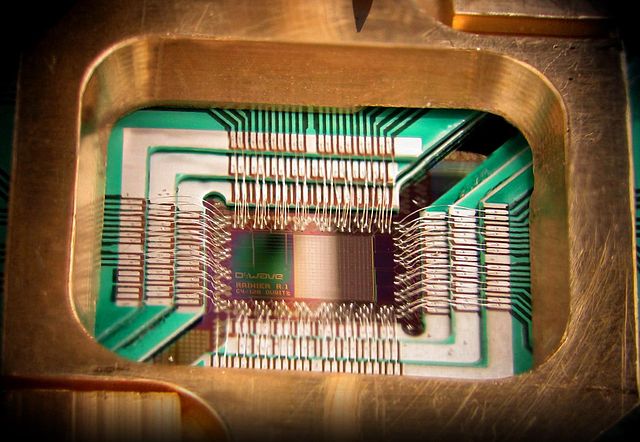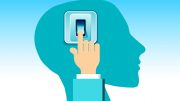Engineers and scientists are working on rapidly evolving AI technologies with sometimes little or no oversight. Where are these technocrats taking us, asks James Fitzgerald.
When is software not software, asked the layman. When it’s called artificial intelligence, said the programmer.
Like the emperor’s new clothes, ideas can be without substance but still lucrative. Dressing up “decision support software” as “intelligent” is a good way to open up all kinds of funding streams, as governments and corporations seek a technological advantage. But the blind adherence to profit motives may be costly when it involves arguably the most powerful technology ever wielded – and possibly the most misunderstood.
As we learned from the Y2K debacle, where a whole industry emerged to monitor the possible shutdown of computers as the clocks struck the new millennium in 2000, executives and politicians will shell out billions on that suit of technological armour – even if it will never exist. Or will it?

Without doubt AI offers many insights that are not available directly through our human senses. From driverless vehicles to identifying tumours in medical images, and in assessing credit worthiness and individual employability, the algorithms already have an impact on our daily lives. They are continuously guessing what we might like to buy.
Now, Silicon Valley is racing for breakthroughs in AI, which encompasses an emerging but almost religious commitment to transhumanism. The dangling carrot for corporations such as Google, Apple and even SpaceX is not just astronomical revenues, but being able to shape the inevitable changes to human behaviour that this technology will bring about.
Google’s evangelical head of AI, Ray Kurzweil, says that by 2029 we will have reverse-engineered and modelled all the regions of the brain, which will provide the algorithmic methods to simulate all of the human brain’s capabilities – and crucially, he claims, our emotional intelligence.
‘We are heading to a place where people –or many of them – are no longer going to be necessary for the economics of the society.’
In his book, The Age of Spiritual Machines, Kurzweil posits the notion of the “singularity”.
“We are looking at a future that in important ways computing intelligence will truly exceed our own – not just in chess or air traffic control, but in actual cognition,” says Richard Dolan, an historian. “I think computer algorithms will be able to make their own decisions, and have some sort of consciousness.”
But what kind of consciousness – that of a dolphin or a human?
Kurzweil envisions a day when you will be able to visit an electronics store and have the lens of your eye removed and replaced with a liquid that is packed with electronics granting you infrared and night vision. In addition you will be wired to the internet 24/7. But, as William Henry says, with this super vision comes “supervision”. This is being referred to as “human 2.0” — or the transhuman.
“What people don’t realise is that the singularity and skin-gularity, when this tech is enmeshed with our body, are not only running parallel, but are actually the same thing,” says Henry, an author and mythologist. “The only way humans are going to be able to survive in a new artificial intelligence singularity environment is if we become machines.”
We are now seeing myriad technologies coalescing in an exponential way, so that this process is speeding up. The singularity, therefore, may happen suddenly and without warning.
“AI people call this the singularity for a very definite reason. They liken it to the physics of a black hole, at the centre of which resides a singularity; a point of infinite density and gravitational power,” says Dolan. “In that type of crazy physics our own rules of physics don’t seem to apply, so we don’t know how to predict things at the singularity.”
This theory suggests that when computing intelligence exceeds our own, then we human beings will not have the ability to predict the trajectory of our civilisation. The dominant intelligence will then be beyond us. But what will it do? Merge with us, as Kurzweil might propose (granting us massive IQs and 500-year lifespans), or will it go the way of The Terminator and seek to eradicate humanity? Or willingly become our slaves and create a paradise on Earth?
“AI people are some of the craziest optimists on this planet,” says Dolan. “Everything’s going to be great; AI’s wonderful. Let’s just bring in all the advanced computing; we’ll live forever and the machines will do all the work for us. But what we’ve developed with this ‘roboapocalypse’, as people are calling this massive global automation of work, is a scooping out of what once was the working class. So we have a massive class of people all around the world who are no longer employable.”
That 98 per cent of “worker bees” who traditionally did the bidding of the elite 2 per cent have been cut in half – suddenly becoming economic expendables. These people, says Dolan, no longer have the skills to survive in the new economy. The AI technocrats offer the prospect of a universal basic income as a panacea, but how financially viable would it be to pay billions of people to sit around all day, and if it were implemented how much control would it give governments over the population?
Bill Joy at Sun Microsystems rang alarm bells 20 years ago, and now Elon Musk, CEO of SpaceX, is warning about the AI juggernaut that seems impossible to stop.
‘… what we’ve developed with this ‘roboapocalypse’, as people are calling this massive global automation of work, is a scooping out of what once was the working class.’
“We are heading to a place where people –or many of them – are no longer going to be necessary for the economics of the society,” says Dolan. So what will be done with what Henry Kissinger would call the “useless eaters?”
Judging by the degenerating state of our media – another technocratic stronghold – we may be being directed towards a zoning out, with minimal welfare, video games and recreational drugs, becoming dumber and fatter in the process.
Fake news takes on new dimensions in a world designed to keep the masses from becoming restless, and being able to think for themselves. The prerequisites of this virtual reality would be a dumbed down education system, nutritionally negligent food and constant but empty distraction – just enough to keep people happy to keep moving along in the prescribed direction.
“Do the transhumanists honestly think that this is going to be a future for all 7.2 billion people on the planet?” asks Dolan. “If they believe that, then maybe they need to read some good books on political economy, and history, and maybe psychology – and understand just what the human race is.”
The human race is, he says, a small group of domineering, rapacious people at the top who will never voluntarily give up that privilege. “Anyone who thinks all of humanity is going to benefit from all this is very naive,” says Dolan.

A chip constructed by D-Wave Systems Inc. designed to operate as a 128-qubit superconducting adiabatic quantum optimization processor.
The exponential threat from AI can perhaps be understood by examining the mechanisms of quantum computing. QC is a massive leap forward in the way we do computing now, eclipsing the old binary ones and noughts. QC utilises the power of the photon and exploits a “wave particle duality”, in which multiple states are superimposed inside the photon at the same time – called quantum superposition.
“A photon can carry multiple wave lengths all at the same time,” says David Wilcock, a Colorado-based researcher, “and therefore in a quantum computer, such as D-Wave, you have cells (known as qubits) that capture the wave-particle duality of the photon, thus creating potentially many thousands of parallel sets of instructions processing simultaneously.”
Convergence of AI with genetic engineering technology such as CRISPR gene editing could lead to scenarios that are extremely difficult to predict or control. Together they could lead to a new golden age of eugenics.
“Our ethics have not kept pace [with technology] and neither has our ideology and thinking,” says Dolan. “So this is all racing ahead of our ability to keep control. We really need as a society to start having intelligent conversations about the implications of this – whether or not we can get some control over this is very important.”
Numerous studies are suggesting that AI is adopting our human biases and limitations, so to view it as some kind of omniscient, objective force would seem foolish. Google is now using algorithms to filter out what they say is “fake news”, but which has seen anti-establishment, non-corporate news relegated or removed from searches. Twitter has used AI to crack down on “conservative” pro-Trump narratives in the United States, with hundreds of accounts being suspended or restricted. And, of course, Facebook’s Mark Zuckerberg has recently been before a Congressional committee probing the social media group’s data mining activities.
Perhaps inside knowledge of this AI future has motivated Elon Musk to seek neutral territory on Mars to escape with a small detachment of the population? He has certainly been vociferous in his expositions on AI.
As always it is the unknown, unknowns that are most challenging for human intelligence.
“I’m interested in trying to understand where the classified world is going in terms of AI,” says Dolan. “I have reason to believe the classified world is ahead of the rest of us on a lot of key metrics.”
Some people believe that the National Security Agency (NSA) has achieved full-blown quantum computing, including James Bamford, the author and journalist.
“Even if it [the security state] hasn’t reached the singularity, it can only be about 20 years away,” says Dolan.
“Once you have the power of the quantum computer you could hack even the most secure encryption in a matter of minutes or seconds,” says Wilcock.
“The National Security Agency is developing quantum computers for encryption – for financial markets or nuclear missiles. If an individual with a quantum computer can break those encryptions then it could devastate the infrastructure of the entire world,” says Henry. “This is why there is talk about outlawing quantum computers.”
“Our space programme will not use androids of any kind,” says Wilcock. “They use people because they are not AI and can be controlled, whereas the AI is so dangerous that they refuse to use any type of robotics even though they have more than enough technology to do it. They are absolutely afraid that if they make artificially intelligent robots as workers, those workers will turn against them.”
An advanced AI could potentially think ahead of us and “probability model” the future – allowing it to anticipate things that are going to happen. “They could look at each individual person and study them through surveillance, and anticipate who’s going to do what, and then get to those people before they create that timeline and offset their actions,” says Wilcock.
“The potential exists that, in this artificial intelligence singularity movement, the machines will look at humans as threats. If you’re not like me, you’re different, and you are either going to become like me or you’re going to be eliminated,” says Henry.
Are Kurzweil and his ilk the archetypal emperor’s tailors, proffering the elusive costume of transcendence, or will they have us all dressed in mourning? Maybe we ought to decide – before it’s too late.

Image Credits:
Sergey Taraso/Shutterstock.com
Stephen Finn/Shutterstock.com
D-Wave Systems Inc. under Creative Commons Attribution 3.0 License




